Addiction and Risky Substance Use

The newly published report from the National Center on Addiction and Substance Abuse at Columbia University (CASA Columbia) has declared what folks who have lost a loved one to a substance use-related death already know: the price of risky drug and alcohol use and/or addiction is terrible and high.
CASA Columbia’s report reveals that at least 578,819 deaths in the U.S. in 2009 were related to these issues. That makes risky substance use and addiction the top causes of preventable death in the United States.
The report estimates that more than 20% of deaths in the United States are linked to alcohol, tobacco or other drug use. Tobacco is the biggest culprit, but overdose deaths are up five times since 1990. The report also indicates the mind-boggling cost of these public health issues: an estimated $468 billion of government dollars annually, although only a fraction of this money is spent on treatment. Legal, financial, abuse, neglect and unintentional accidents, violent crimes and compromised health are all additional costs of these epidemics.
Only 1 in 10 people with addiction issues (other than nicotine) actually report getting treatment. As a country, we don’t even count the number of people with nicotine addiction who seek treatment. As Dr. Lloyd I. Sederer, MD writes in his Huff Post article on 6/26/12 on this topic, “Can you imagine that measure of neglect were the conditions heart or lung disease, cancer(s), asthma, diabetes, tuberculosis, or stroke and other diseases of the brain?”
CASA Columbia’s report, a hefty 586 pages, available here, makes many important points that Americans who want a healthier nation should consider. Here are just a few:
- Addiction is a complex, brain-based disease that can be diagnosed and treated.
- Addiction is not the result of a poor character or lack of willpower—but 1/3 of Americans surveyed still believe that it is.
- Until misconceptions and stigma are addressed, the barriers to early intervention and treatment will remain higher than many of us can jump.
- Treatment programs should be using evidence-based practices.
- Examples of evidence-based practices—approaches proven to be effective—include but are not limited to Motivational Interviewing, Cognitive Behavioral Therapy, and Medication Assisted Treatment.
- Risky substance use merits the use of an early intervention to prevent addiction or other unintended consequences or deaths. Brief screening, intervention, and referral to treatment tools (SBIRT) should be widely used in healthcare, social services, education, and criminal justice.
The challenges raised by the CASA Columbia report bring to mind the words of author James Baldwin: Not everything that is faced can be changed. But nothing can change until is it faced. Let’s face it together, with help for today and hope for tomorrow.
For more information on Pyramid Healthcare’s intervention and treatment programs for problem drinking and substance use; alcohol or drug dependence & addiction; recovery support and mental health/psychiatric services, contact us in Maryland at (301) 997-1300.
The newly published report from the National Center on Addiction and Substance Abuse at Columbia University (CASA Columbia) has declared what folks who have lost a loved one to a substance use-related death already know: the price of risky drug and alcohol use and/or addiction is terrible and high.
CASA Columbia’s report reveals that at least 578,819 deaths in the U.S. in 2009 were related to these issues. That makes risky substance use and addiction the top causes of preventable death in the United States.
The report estimates that more than 20% of deaths in the United States are linked to alcohol, tobacco or other drug use. Tobacco is the biggest culprit, but overdose deaths are up five times since 1990. The report also indicates the mind-boggling cost of these public health issues: an estimated $468 billion of government dollars annually, although only a fraction of this money is spent on treatment. Legal, financial, abuse, neglect and unintentional accidents, violent crimes and compromised health are all additional costs of these epidemics.
Only 1 in 10 people with addiction issues (other than nicotine) actually report getting treatment. As a country, we don’t even count the number of people with nicotine addiction who seek treatment. As Dr. Lloyd I. Sederer, MD writes in his Huff Post article on 6/26/12 on this topic, “Can you imagine that measure of neglect were the conditions heart or lung disease, cancer(s), asthma, diabetes, tuberculosis, or stroke and other diseases of the brain?”
CASA Columbia’s report, a hefty 586 pages, available here, makes many important points that Americans who want a healthier nation should consider. Here are just a few:
- Addiction is a complex, brain-based disease that can be diagnosed and treated.
- Addiction is not the result of a poor character or lack of willpower—but 1/3 of Americans surveyed still believe that it is.
- Until misconceptions and stigma are addressed, the barriers to early intervention and treatment will remain higher than many of us can jump.
- Treatment programs should be using evidence-based practices.
- Examples of evidence-based practices—approaches proven to be effective—include but are not limited to Motivational Interviewing, Cognitive Behavioral Therapy, and Medication Assisted Treatment.
- Risky substance use merits the use of an early intervention to prevent addiction or other unintended consequences or deaths. Brief screening, intervention, and referral to treatment tools (SBIRT) should be widely used in healthcare, social services, education, and criminal justice.
The challenges raised by the CASA Columbia report bring to mind the words of author James Baldwin: Not everything that is faced can be changed. But nothing can change until is it faced. Let’s face it together, with help for today and hope for tomorrow.
For more information on Pyramid Healthcare’s intervention and treatment programs for problem drinking and substance use; alcohol or drug dependence & addiction; recovery support and mental health/psychiatric services, contact us in Maryland at (301) 997-1300.







